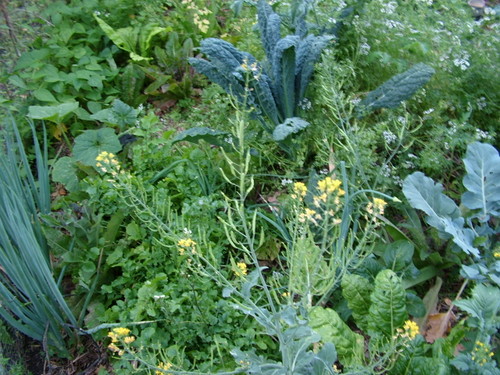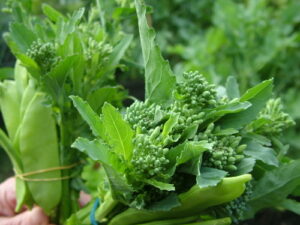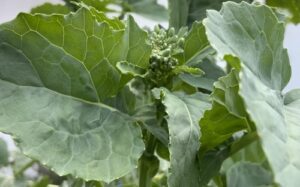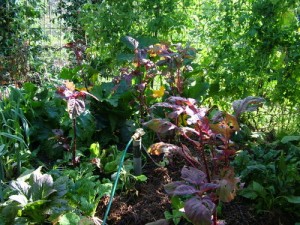I haven’t written a post about gardening for a while, so I thought I should write one about not gardening. At the moment, I feel hugely lucky to have a garden that keeps on feeding me with absolutely (I mean absolutely) no attention.
I have three part time, irregular jobs. Most of the time I feel very privileged to be able to live in the bush, do work I believe in, and still have time for creative things. Every so often though, it doesn’t rain but it pours, and all three jobs line up in a perfect storm. If I didn’t have a garden, I don’t think I could do it – no time for shopping, no corner takeaway, no option to get sick.
It is now into the sixth week of this particular perfect storm. There will be a slightly lean time in a couple of months when missed or scrappy planting days will come home to roost, but probably not too much – the garden is still pretty full. And as I made an Italian-ish white bean stew with pumpkin, tomatoes, zucchini, green beans, eggplant, and herbs for dinner tonight, (and fretted about the lack of gardening posts), I thought, there is a story in how this came to be.
My tips for a garden with stamina:
- Get into seeds. Subscribe to catalogues, network with other gardeners, and experiment with varieties until you find ones that love your microclimate and suit the way you want to harvest. People have been breeding plants tens of thousands of years and have nurtured hundreds of thousands of varieties. The paltry dozen or so that agribusiness favours are like advertising jingles are to music – not even a tiny taste of the richness of our heritage. Well chosen non-hybrid varieties will not only do better, they will also self-seed. The pumpkins, parsley, basil, tomatoes and green beans in our dinner all planted themselves.
- Things only plant themselves and thrive in really healthy soil. Delegate soil building – digging, fertilizing, and soil conditioning – to a dense community of soil organisms, visible and microscopic, that you treat as friends (you don’t poison friends).
- Re-define garbage. See any kind of organic matter you cross paths with as gifts for these friends. Set up some system to make it easy for them process large amounts, and every time you go out, bring home presents.
- Get into herbs and perennials. They are usually slower and have smaller yields per hectare so they are not commercially attractive. But they are loyal, reliable, resilient, and very tasty. The oregano, thyme, welsh onions, garlic chives, and peppers in our dinner all just carry on without me.
- Delegate pest control. Provide habitat for predatory creatures – birds, frogs, lizards, and predatory insects – and leave enough of their prey alone to maintain a stable breeding population. Busy or not, I never hunt pests. That’s frog work.
In dry weather it’s a bit harder, but in weather like we have been having lately, that’s enough. This weekend though is a leafy planting break, and this is such glorious weather for leafy greens, I’m so looking forward to a day in the garden.




Pingback:Fruiting Planting Days in Mid Spring
Pingback:The First Compost Pile of the Season
Pingback:Roots and Perennials Planting Days in Early Summer
Pingback:Leafy and Fruiting Planting in Early Autumn
Pingback:Leafy Planting Days in Early Spring for a Neglectful Gardener
Pingback:Camilla’s Chilis Rellenos